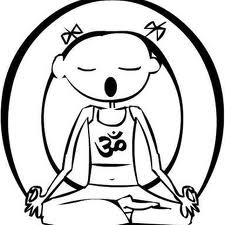- „Teljes Az ott, és teljes Ez itt
- Teljesből teljes felemelkedik
- Teljes a teljestől elszakad
- Teljesnek mégis megmarad”
(Isa-upanisad)
- Mantra? Mi az?
- A mantra rezgések tudatos létrehozása a tudat tágítására, a mikrokozmoz vagy a makrokozmosz befolyásolására, az elme felszabadítására vagy megismerés céljából. Ebben az értelemben a mantra mágikus formula, „varázsige”. Az indiai védikus tradícióban a tanítvány azért kapja a mantrabeavatást, hogy folyamatosan emlékezzen egy adott spirituális célra.
- A mantra egy hang, egy szótag vagy szócsoport, melynek hangos, néma vagy kiejtetlen állapotában való „megszólaltatása” rezgéseket, energiát hordoz. A mantrában a rezgés az elsődleges, utána a ritmus, a dallam, a jelentés. Az univerzumban minden rezgés, hullám, energia - a gondolat és a prána is. Az ind kozmogónia szerint, „kezdetben volt a hang”, minden kezdete a rezgés.
- A mantra különleges tudatállapotot vált ki a hallgatóban és a mantrázóban egyaránt. Néha mint a legalacsonyabb szintű meditációs gyakorlatot említik, mert nem szükséges hozzá a test ellazultsága, az elme előzetes koncentráltsága. A mantra fókuszt kínál az elme számára és segít abban, hogy összhangba hozzuk a külső és belső világunkat. A mantrára való összpontosítás létrehozza az elme koncentráltságát, majd a mantra rezgése tovább mélyíti ezt a folyamatot, és így jön létre a meditáció.
A mantra lehet önálló meditációs gyakorlat, bizonyos jógairányzatokban az ászanák gyakorlása előtt és után kap helyet, használják a légzőgyakorlatok elmélyítésére, különböző meditációs gyakorlatok előkészítéseként illetve elmélyítéseként közvetlenül a belső csendességbe való merülés előtti fázist alkotja.
- Az Om mantra
- „A mindenség ez a szótag” - írja a Mándúkhja-upanisad. Az Om - vagy tradicionális kiejtés szerint Aum - az energia, a mindenütt jelenvalóság, a mindentudás, a teremtés szimbóluma, a mantrák mantrája. Szakrális szótag, amelyhez az egész teremtést kötik - úgy tartják, kezdetben volt az Aum, ezzel a hanggal kezdődött minden. Az Om a leggyakrabban zengetett mantra, évezredek óta használják alapmantraként a hindu, buddhista, szikh és dzsáin tradícióban.
- Az Aum hangjait a következőképp magyarázzák: Az A az ébrenléti állapot, az anyagi világ, a fizikai sík szimbóluma. Az U, az álomé, a finom energetikai síké. Az M, a mélyalvás szintje, amikor nincs elmetevékenység, a tudatalatti, az elmén túljutott állapot. A Turiya, a mantra utáni csend is hangnak számít, ez a meg nem nyilvánult természet szimbóluma, „az idő meghaladása”, „a lélek önvalója”, „megismerni ezt kell, mert ez az igazság maga”. A tudatállapotok változásain át - melynek eszköze lehet a jóga - jutunk el ehhez a legbelső, végső, minden minőségen túli csendhez. A jógiban, amikor már mindent elcsendesített magában, vagyis tovatűntek a hangok, a mondatok és a mondattöredékek, a belső párbeszéd szavai és szótöredékei, a képek és a gondolatok, és még a gondolatoknak a töredékei is, végül az érzések és az érzékek is, akkor végül a csöndben nem marad más, csak az Om rezgése. Ezt „hallja” végezetül a jógi.
- Az Om mantra rezgései harmóniát hoznak a világba és a szervezetünkre is harmonikus hatással vannak. Az Om mantra folyamatos, hangos vagy hangtalam zengetése összerendezi a szervezet idegi rezgéseit, a szervek saját rezgéseit egymáshoz hangolja, lecsillapítja az agykérgi működést és összehangolja az agyféltekéket, intenzíven elcsendesíti az elmét - ez minimum 20 másodperc elteltével kezdődik el. Amikor a szervek egymásra hangolódnak, külön-külön is sokkal kisebb energiafelhasználással és sokkal könnyebben tudnak működni. Az Om mantra nem csak a testre gyakorol különleges hatást. A négy hang dinamikája, rezgése erős hatással van az elmére és az idegrendszerre is, minden túlzás kerülendő. Mester felügyelete nélkül nem ajánlott hosszabb ideig gyakorolni, maradjunk a gyakorlásonkénti 2x3-nál.
Amikor az Om mantrát gyakoroljuk, a test különböző területein jelentkező rezgéseket figyeljük. Amikor a teljes jógalégzésben már jártassá váltunk és az természetessé vált, kezdjük gyakorolni. Először teljes jógalégzéssel belélegzünk. Az A egy halkan induló, finom és gyengéd hang, miközben a teljes jógalégzés kilégzési szakaszával ellentétben, most a kilégzés a mellkassal indul, és azt, mint egy ernyőt, leengedjük. Ettől az A hang egyre erősödik, majd hamarosan átvált egy erőteljes U hangba, ekkor már a hasizmok is dolgoznak. Ezután a has legalsó része is munkába lép - ez az M hang, amely lassan elhalkul. Amikor elfogyott a levegő, lassan belélegzünk, hagyunk időt a csöndnek, miközben tovább figyeljük, hogy milyen rezgések jelentkeznek utóhatásként a test különböző tájain.
- So Ham, a légzés mantrája
A So Ham a légzés hangja, az életet végigkísérő mantra. A So Ham durva formája belégzésre a So, kilégzésre a Ham kiejtése. Finom formája a légzés hangjának tudatosítása és figyelése, belégzéssel a So, kilégzéssel a Ham szótag ismétlése mentálisan - annak figyelése, ahogy a szavak együtt áramlanak a figyelemmel, és ahogy a légzésbe olvadva együtt áramolnak a lélegzettel. Majd elengedve a mentális kiejtést a figyelem és a légzés tovább áramlik együtt a nasagri és az adjna között - a figyelem egyenletes áramlásának fenntartása a légzéssel és annak hangjával, a figyelem ott tartása, elmélyülés, időzés ebben a csendben.

- „That is whole, This is whole
- From the whole the whole becomes manifest
- From the whole when the whole is negated
- What remains is again the whole”
(Isha Upanishad)
- Mantra? What?
- The Sanskrit word mantra consists of the root man- “to think” and the suffix -tra, designating tools or instruments, hence a literal translation would be “instrument of thought”. A mantra is a sound, syllable, word or group of words that is considered capable of “creating transformation”.
- Its use and type varies according to the school and philosophy associated with the mantra. Mantras originated in the vedic tradition of India became an essential part of the Hindu tradition and a customary practice within buddhism, sikhism and jainism. With the transition from ritualistic vedic traditions to mystical and egalitarian Hindu schools of yoga, vedanta and tantra, the orthodox attitude of the elite nature of mantra knowledge gave way to spiritual interpretations of mantras as a translation of the human will or desire into a form of action. Mantras, the Sanskrit syllables inscribed on yantras, are essentially “thought forms” representing divinities or cosmic powers, which exert their influence by means of sound-vibrations.
Yogic masters all agree on the absolute necessity of concentration exercises preceding meditation. Repetition of mantras is used to attain single-pointedness of mind, a state of concentration before merging in meditation. It is said that through mantra practice extreme focus and unity with the principal idea of the mantra can be attained. The vibrations and sounds of the mantra are considered extremely important, and thus reverberations of the sound are supposed to awaken the kundalini and stimulate chakras according to many Hindu schools of thought.
- The seed syllable Om represents the underlying unity of reality
- For the authors of the Hindu scriptures of the Upanishads, the syllable Om, itself constituting a mantra, represents the Absolute, the one supreme, universal Spirit that is the origin and support of the phenomenal universe, as well as the whole of creation. In Hindu upanishadic and yogic thought, the sounds are manifestations of ultimate reality, in the sense of sound symbolism postulating that the vocal sounds of the mantra have inherent meaning independent of the understanding of the person uttering them. Hindu tantra eventually came to see the letters as well as the sounds as representatives of the divine.
- In the Hindu tantra the universe is sound. The supreme brings forth existence through the Word (Shabda). Creation consists of vibrations at various frequencies and amplitudes giving rise to the phenomena of the world. The sounds of Om - traditionally pronounced Aum - are explained as the following: A - the state of being awake, material world, physical plane. U - dreaming, subtle energetic plane. M - deep sleep, subconscious plane, transcended mind. Turiya - the silence after the mantra is the sound of unmanifest nature, “the transcendence of time”, “the ultimate reality of the soul”, “the truth itself that should be recognized”. Through changes of consciousness - which can be attained by yoga - we can reach the innermost and ultimate silence which is beyond all qualities. Beyond all inner dialogues and commentaries, all idiomatic fragments, words, sounds, images, thoughts, feelings and sensations there is silence. In the silence remains the vibration of Om that the yogi ultimately experiences.
The most basic mantra is Om, which in Hinduism is known as the "pranava mantra," the source of all mantras. The Hindu philosophy behind this is the idea of nama-rupa (mind-body), which supposes that all things, ideas or entities in existence, within the phenomenological cosmos, have name and form of some sort. The most basic name and form is the primordial vibration of Om, as it is the first manifested nama-rupa of the unmanifest reality. Essentially, before existence and beyond existence is only One reality, and the first manifestation of reality in existence is Om. For this reason, Om is considered to be the most fundamental and powerful mantra, and thus is prefixed or suffixed to all Hindu prayers. While some mantras may invoke individual gods or principles, the most fundamental mantras, like Om, the Shanti Mantra, the Gayarti Mantra and others all ultimately focus on the One reality.

- Gayatri Mantra (Rigveda)
- Om Bhur Bhuva Svaha
- Tat Savitur Varenyam
- Bhargo Devasya Dhimahi
- Diyo Yo Nah Prachodayat
- Om A három világot beragyogó legtisztább fény világítsa meg tudatunkat és irányítsa értelmünket a bölcsesség útjára
- The Gayatri mantra is considered one of the most universal of all Hindu mantras, invoking the universal Spirit or the Absoulte as the principle of knowledge and the illumination of the primordial Sun:
Om: the primeval sound
Bhur: the physical world
Bhuvah: the mental world
Svaha: the celestial, spiritual world
Tat: that; supreme reality; paramatma
Savitur: sun, creator, preserver
Varenyam: most adorable, enchanting
Bhargo: luster, effulgence
Devasya: resplendent, supreme being
Dhimahi: we meditate upon
Diyo: the intellect, understanding
Yo: may this light
Nah: our
Prachodayat: enlighten, guide, inspire
- Mahamrityunjaya Mantra (Rigveda)
- Om Triyambakam Yajamahe
- Sugandhim Pusthivardhanam
- Urvarukamiva Bandhanat
- Mrityormukshiyam Amritat
- Hatalmas halált legyőző mantra: Om Háromszemű feléd tekintek, hogy megszabaduljak a kötelékektől, hogy elérjem a halhatatlanságot
Om Three-eyed, I look at you for to be liberated from bondages and spiritual death for the sake of immortality
- Om Purnam (Isha Upanishad)
- Om Purnamadah Purnamidam
- Purnat Purnamudachyate
- Purnasya Purnamadaya
- Purnameva Vashsihate
- Om Teljes Az ott, és teljes Ez itt
- Teljesből teljes felemelkedik
- Teljes a teljestől elszakad
- Teljesnek mégis megmarad
Om That is whole, This is whole
From the whole the whole becomes manifest
From the whole when the whole is negated
What remains is again the whole
- Sarvesham Shanti Mantra
- Om Sarvesham Svastir Bhavatu
- Sarvesham Shantir Bhavatu
- Sarvesham Purnam Bhavatu
- Sarvesham Mangalam Bhavatu
- Om Sarve Bhavantu Sukhinah
- Sarve Santu Niramayaah
- Sarve Bhadrani Paysantu
- Ma-Kaschid-Dukha-Bhag-Bhavet
- Om May good befall all
- May peace be unto all
- May fullness be unto all
- May prosperity be unto all
Om May all be happy
May all be free from disabilities
May all look to the good of others
May none suffer from sorrow
- Shanti Mantra (Taittiriya Upanishad)
- Om Sahana Vavatu
- Sahanau Bhunaktu
- Sahaviryam Karavavahai
- Tejasvi Navadhitamastu
- Ma Vidvisavahai
- Om Shanti Shanti Shanti
Om Let the studies that we together undertake be effulgent
Let there be no animosity amongst us
Om peace, peace, peace
- From Ignorance To Truth (Brhadaranyaka Upanishad)
- Om Asato Ma Sat Gamaya
- Tamaso Ma Jyotir Gamaya
- Mrtyor Ma-Amritam Gamaya
- Om Shanti Shanti Shanti
Om Let me be led from the unreal to the real
From darkness to light
From mortality to eternity
Om peace peace peace
